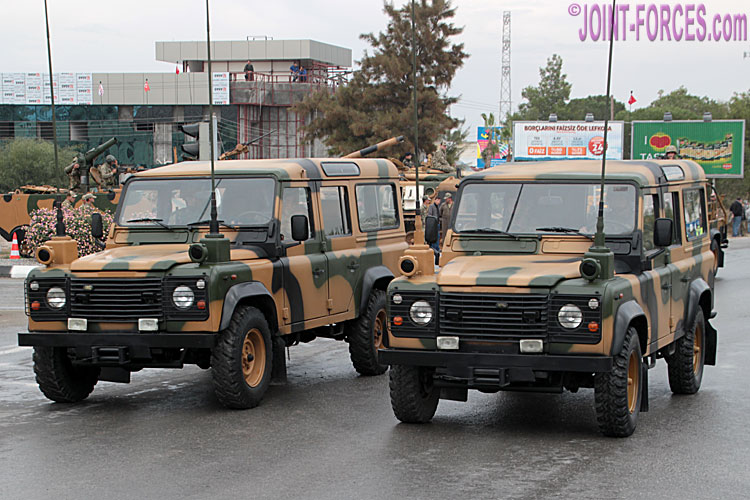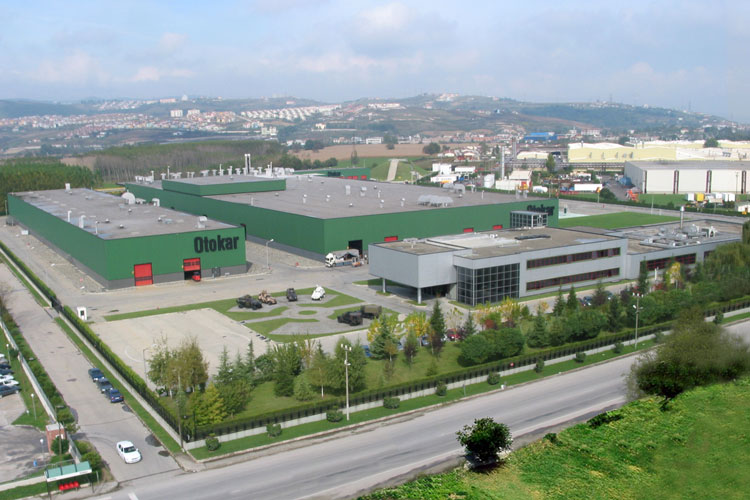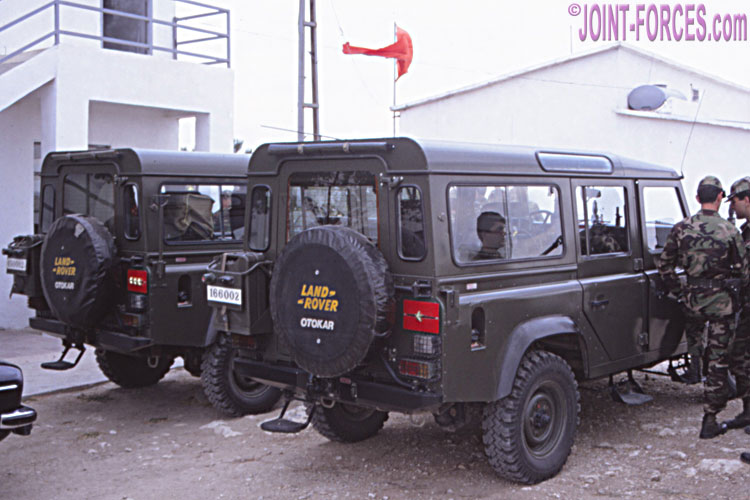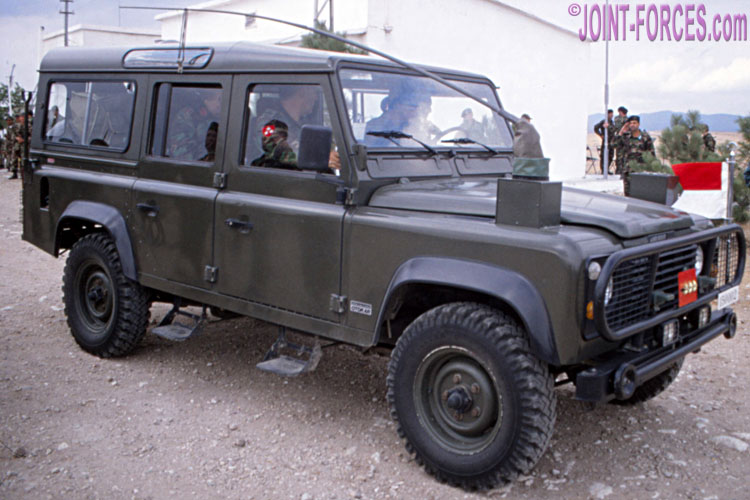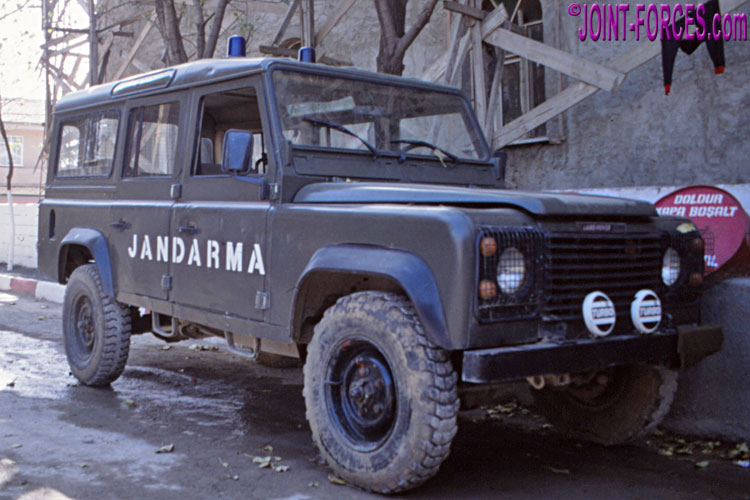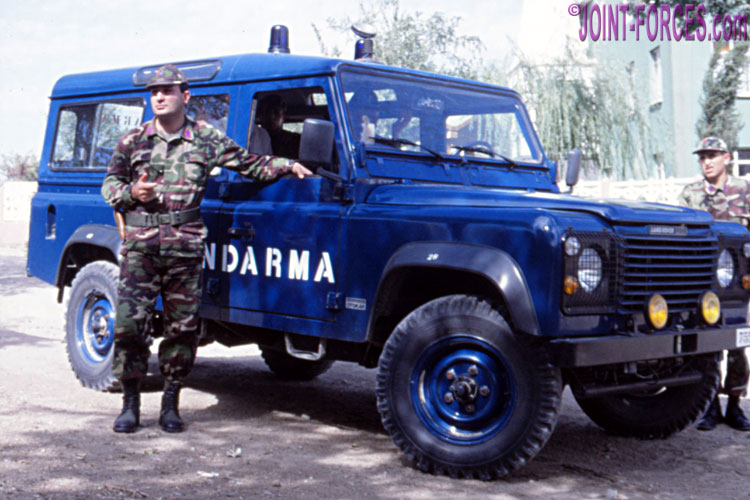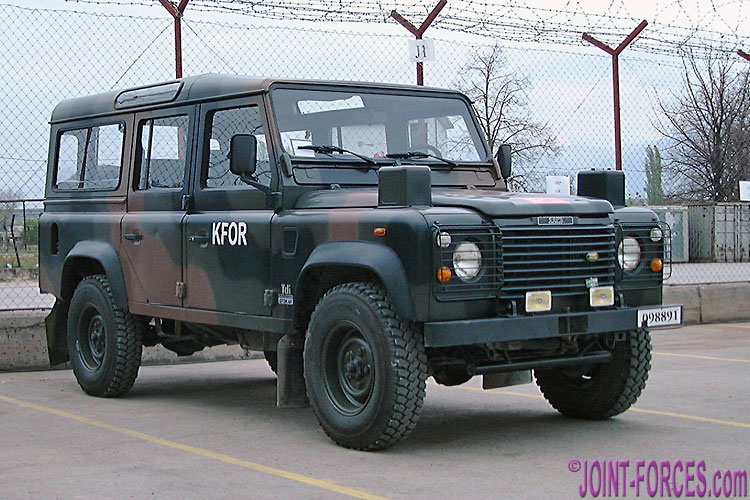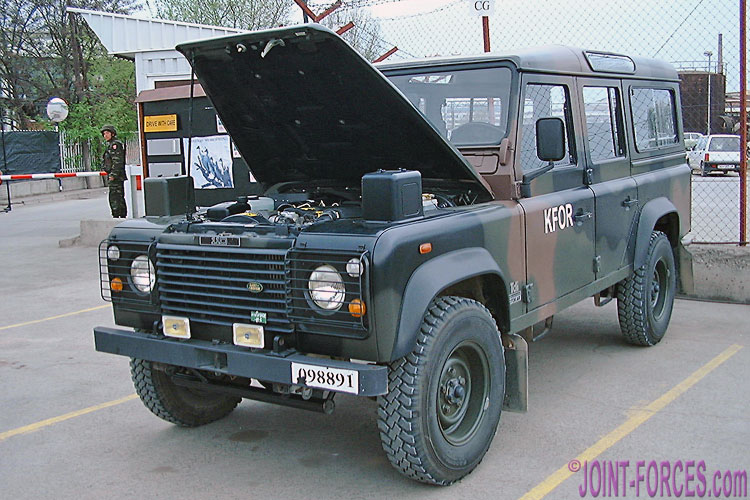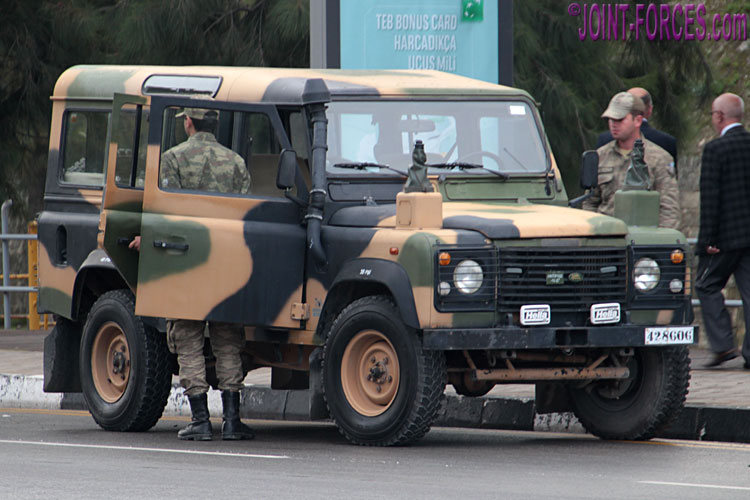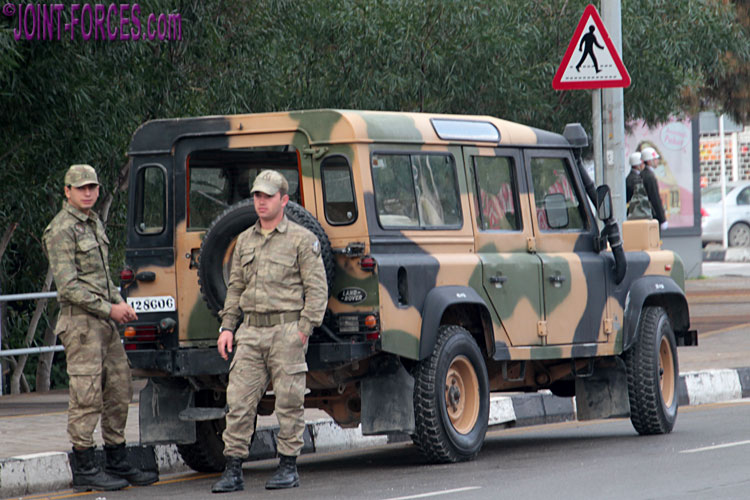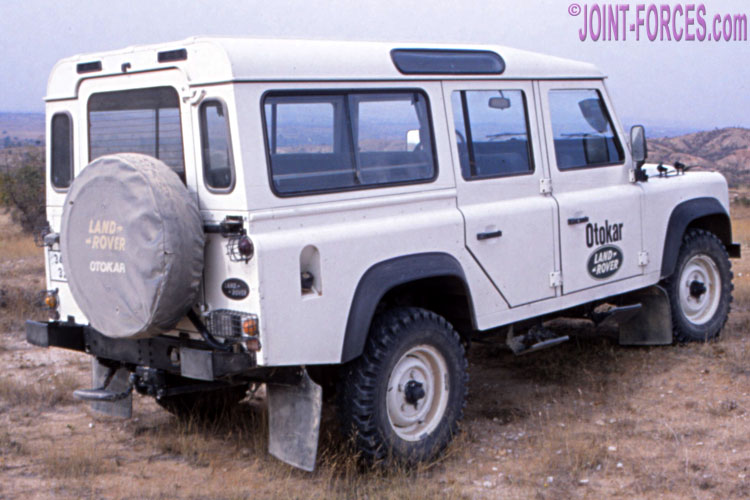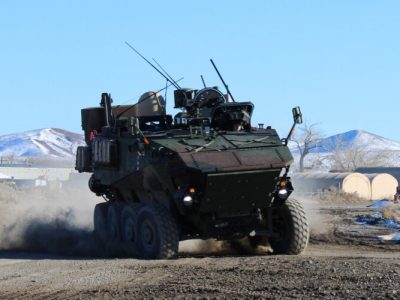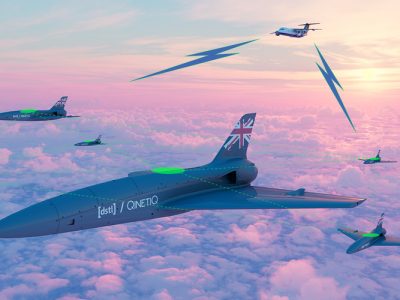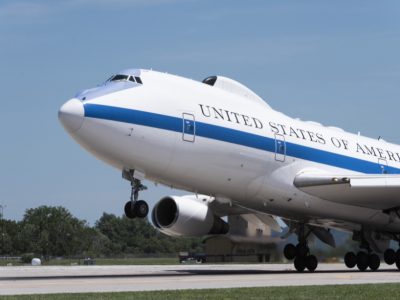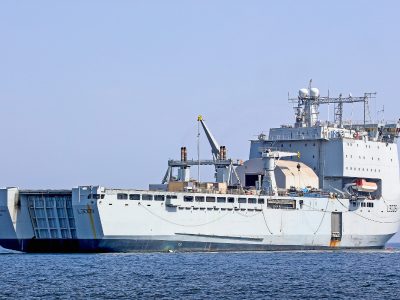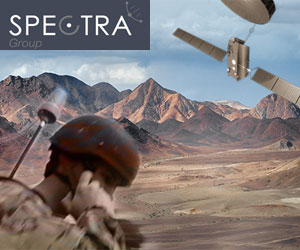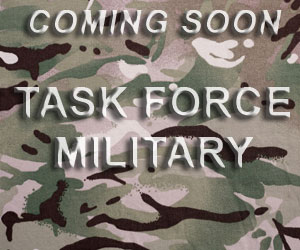For around a quarter of a century the Turkish manufacturer Otokar assembled a wide range of Defender variants including the five-door Station Wagon, writes Bob Morrison.
~
In 1992 I travelled to Turkish Thrace to cover a NATO multinational exercise and while there I both visited Otokar’s production facility and borrowed a Defender 110 Station Wagon for the duration of my assignment. Back then coil sprung Land Rovers had been produced in Istanbul for a good five or six years by Otobus Karoseri Sanayi A.Ş. (now Otokar Otomotiv ve Savunma Sanayi A.Ş.) but a few years later, the company having outgrown its urban location, a new dedicated plant was constructed in Arifiye, some 150km to the east. At this point it is possibly worth mentioning that Turkey is constitutionally a secular state, but Otokar is in an ideal position to sell vehicles it builds, including a range of buses, to Muslim nations as almost all of the Turkish population follows Islam; hence the reason for a number of armies in the Arab world using Land Rovers.
The five-door Land Rover Station Wagon model saw limited service with UK Forces, primarily but not exclusively with specialist rear echelon units, and indeed as late as January 2010 a small batch is shown as having entered service; possibly these were destined for the RAF contingent based in the Falkland Islands. However, as far as I can determine no Station Wagon variants were built under the TUL HS (or Wolf) contract which suggests that those five-door Land Rovers procured by UK MoD after 1996 were most likely either built to civilian specification or were part-militarised Core Model vehicles.
While the British might not have used all that many of the Station Wagon version of the Land Rover built on the One-Ten or later Defender 110 chassis the armed forces of several other nations did, including the Finnish, French and Polish to name just three, as with four side doors and five / six forward facing seats plus a rear compartment capable of seating four to six more or being used for cargo it was a very useful utility vehicle. The Turkish Army, who procured a wide range of Otokar-built Defenders from around 1988 onwards, originally used their Station Wagons primarily in the Command & Liaison role and I even photographed two used as Field Cars by a Brigadier General and a Lieutenant General sitting side-by-side at the Distinguished Visitors Day during Exercise ALLEY EXPRESS 92.
Embarrassing story: While I am on assignment I tend to be rather tunnel-visioned and when I spotted a Turkish Army Station Wagon heading towards me on an otherwise deserted rural road somewhere to the north of Lüleburgaz, during the free play phase of the exercise, I jumped out of my Station Wagon and flagged it down for photographs. As it drew to a halt both the driver and the officer in the front seat were giving me rather strange looks… and that was when I spotted a very senior officer seated in the second row. I had not yet realised that Station Wagons were primarily used as Field Cars by the top brass, but fortunately the General whose vehicle I had stopped not only spoke superb English but was also a Land Rover fan himself. During our brief chat he told me he had only ordered his driver to stop because I, too, was driving an Otokar Station Wagon and he was curious about who I was as not many locals would flag down a military vehicle in the middle of a major exercise.
The Turkish-built Station Wagons were essentially little different from their Solihull-built siblings, as the body panels, engine and driveline components were primarily assembled from a kit. However Otokar produced their own chassis and wheels – the long wheelbase Turkish Defender 130 chassis was manufactured as such, whereas Solihull had to cut and stretch a Defender 110 chassis to do the job – and indeed when the Turks produced a Heavy Duty version of the D110 chassis Land Rover in the UK supplied this when certain models, including Snatch Vixen and R-WMIK, were upgraded for the MoD. Manufacture quality of Turkish components and Turkish assembly of vehicles was second to none, and I have known Land Rover personnel who privately conceded Otokar-built vehicles were better built than their English equivalents.
It was not only the Turkish Army who used the D110 Station Wagon at the time of my 1992 visit and the Jandarma, a para-military gendarmerie who in rural and remote areas provided a range of blue light services and not just policing, also used this model in addition to others. One of the Otokar team I worked with during my assignment had a brother-in-law who commanded a small Jandarma station and he arranged for me to photograph the green vehicle above. While out and about covering Turkish troops on the exercise I also spotted this blue version parked up in a small village. Generally, other than the blue beacons, there was little difference between Jandarma and Army vehicles at this time, though the pair used by the generals had sprung side steps and antenna boxes atop the front wings plus brushguards at the front and mesh baskets on the rear lights.
The next time I encountered Otokar Station Wagons was during the Albanian insurgency in what was then the Former Yugoslavian Republic of Macedonia or FYROM (now the Republic of North Macedonia) in early 2001. At this time NATO had logistic bases in FYROM to support KFOR in neighbouring Kosovo and Turkey was one of the contributing nations. While visiting the KFOR Press Office on the outskirts of Skopje to register my presence after having been accredited by the FYROM Ministry of the Interior – where tensions are high and armed soldiers are manning roadblocks I always find it helps to carry too much accreditation rather than too little – I asked permission then grabbed the opportunity to photograph a Turkish duty Land Rover, a Station Wagon, outside the contingent’s headquarters. Unlike the early vehicles photographed in 1992, this example had a Tdi engine fitted; I think it was the 300Tdi model. The only real external difference between this one and the Land Rovers photographed in 1992, other than the the camouflage paint job and the lack of the brushguard, was that the antenna mount boxes on the wing tops were the more modern rounded edge type. Inside this later batch vehicle, however, the triple seat arrangement for the second row had been replaced by two individual seats turning this Station Wagon into an eight-seater variant.
The two photos above and the lead image are of Otokar Station Wagons I photographed in the divided city of Nicosia / Lefkoşa on Cyprus during the October 2014 Republic Day Commemorations and Parade, in the north sector of the island, where both Turkish and Turkish Cypriot military personnel were participants. As the commentary for the parade proceedings was entirely in Turkish, and as there is also a degree of sensitivity about troop dispositions on an island which is still technically under ceasefire, I was unable to ascertain whether these were used by local troops or by units posted to the island from the Turkish mainland. Other than the raised air intake, the lone Station Wagon above is similar in specification to the KFOR vehicle, but the pair photographed in the parade are to a more military specification having night convoy and infrared lighting plus self-recovery winches; I will look a little further into this in future articles on different Otokar variants.
This white Defender Station Wagon is the demonstrator Otokar loaned me back in 1992. It is a standard civilian build specification vehicle with an additional WARN self-recovery winch, but is not too dissimilar to their military model of that period. This vehicle had seating for three plus three plus up to six in the rear, with the latter on inward-facing bench seats which could be hinged to give more cargo space. Technically it is therefore a 12-seater (the two front seat passengers would end up being really good friends by the end of a long journey) but slightly later Otokar-built models had just two individual front seats, making them 11-seater; or even 10-seater if in 2 + 2 + 6 configuration. Even later Station Wagon seating arrangements had two individual inward facing seats each side in the rear, giving a 9-seater, or just two forward-facing rear seats, giving a 7-seater if second row seats were for three rather than a pair. Incidentally, the Czech Armed Forces used 7-, 9- and 11-seater Solihull-built Station Wagons at various times.

The two Land Rovers in the lead image for this article were followed by the Otokar equivalent of the Special Operations Vehicle, which I plan to look at in due course, but my next article in this series will most likely focus on the rarely seen Otokar Defender Troop Carrier as featured in the company publicity photo below.
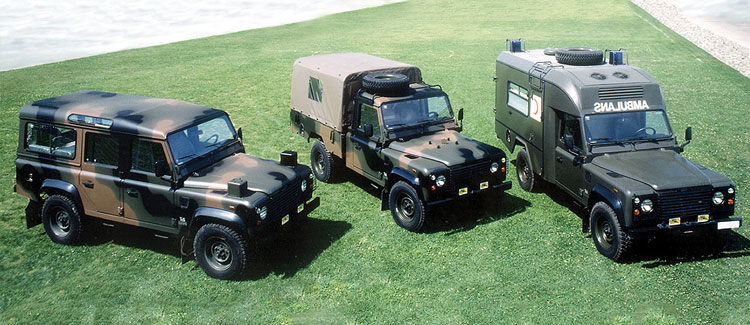
Footnote: Over the late May Bank Holiday 2020 weekend, rather than going out in the sun and joining the herd of lemmings that invaded Devon, and Cornwall, from the Home Counties and the Midlands because the sun was shining, I stayed alert, stayed at home, and searched through several backup hard drives to try to find a copy set of lost digital images from my October 2014 trip to Cyprus and my visit into the Occupied Sector, aka the de facto Turkish Republic of North Cyprus. Although I have both Master and Backup removable hard drives containing virtually all of my exercise and deployment assignment digital images going back to 2001, the 2014 TRNC image folder had mysteriously vanished from both (or was possibly corrupted and therefore invisible when searching) but fortunately it turned out I had also backed up the laptop hard drive I used on that trip onto a spare drive before clearing space for my next assignment and as a result I now have recovered (and copied) everything I shot on that interesting trip. Phew!
[images © Bob Morrison unless noted]
If you arrived on this Military Land Rovers section page from a link on our Facebook or Twitter social media pages please feel free to Share or Retweet to alert other Green Oval Badge enthusiasts. Thanks.


